Bench – Multi-Workstation Desks
-
Vedi
Dettagli
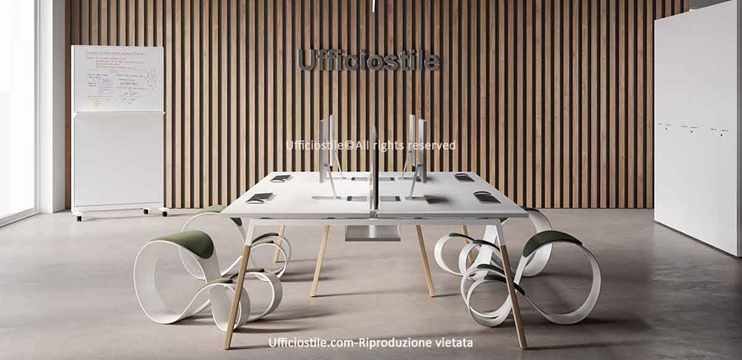
4-Person Bench Workstation with Slanted Frame
ITMOU453
€ 2.526€ 1.465 -
offerta
Vedi
Dettagli
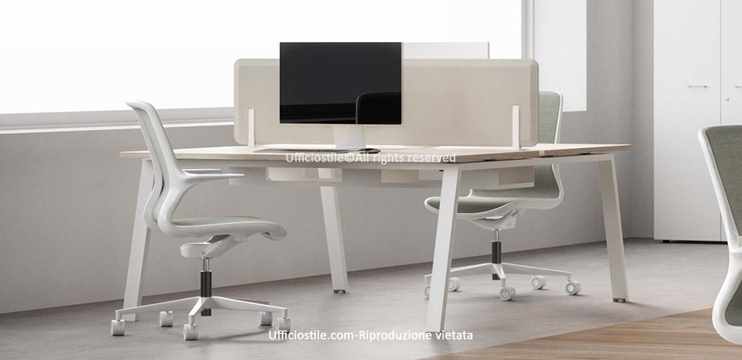
2-Person Bench Workstation
U4BI1616STC
€ 1.052€ 610 -
Vedi
Dettagli
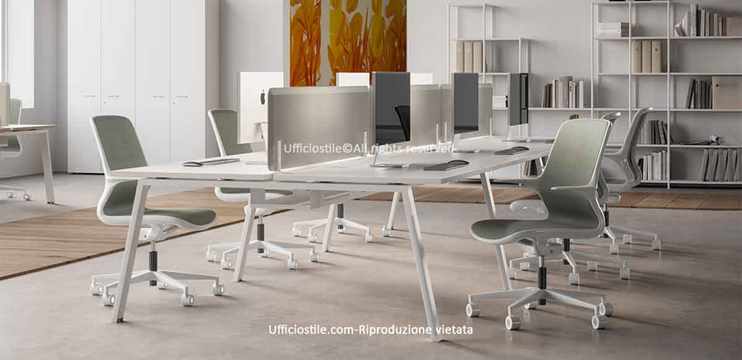
6-Person Bench Workstation
U4BI14162B2
€ 2.787€ 1.616 -
Vedi
Dettagli
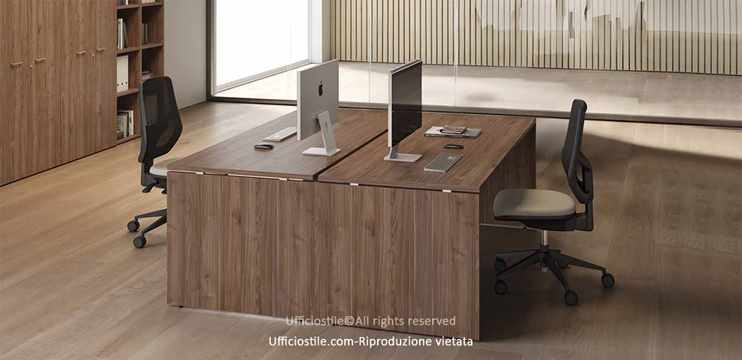
Double Workstation Desk cm 160x165
U4BM16160
€ 600€ 348 -
Vedi
Dettagli
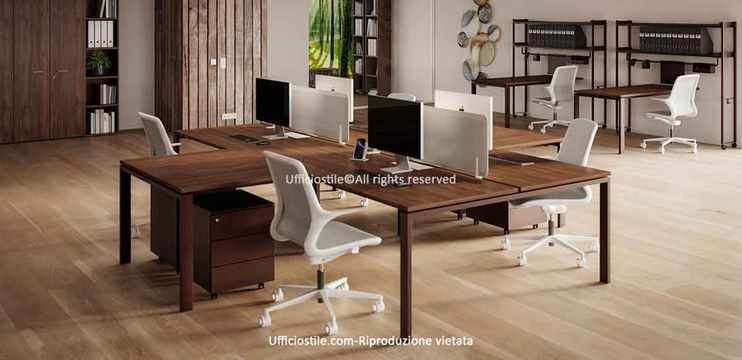
Bench 4 Workstations Island
ITMOU474
€ 4.816€ 2.793 -
Vedi
Dettagli
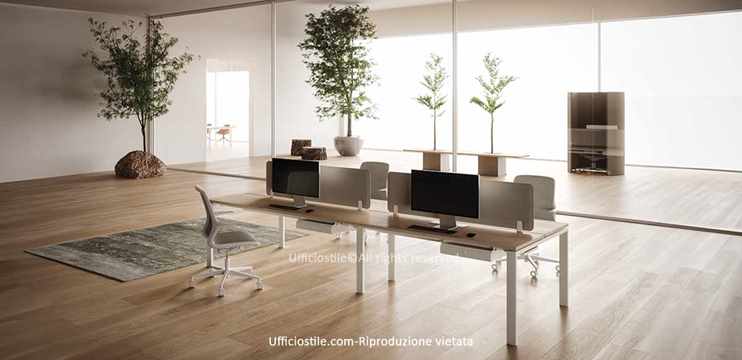
Bench 4 Workstations
U4BP3212SCC
€ 3.083€ 1.788 -
Vedi
Dettagli
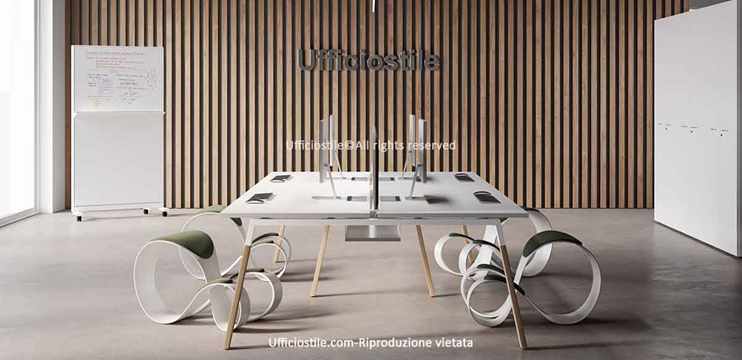
Bench 04 workstations and tall bookcase
U4BL3216SCT
€ 2.306€ 1.337 -
Vedi
Dettagli
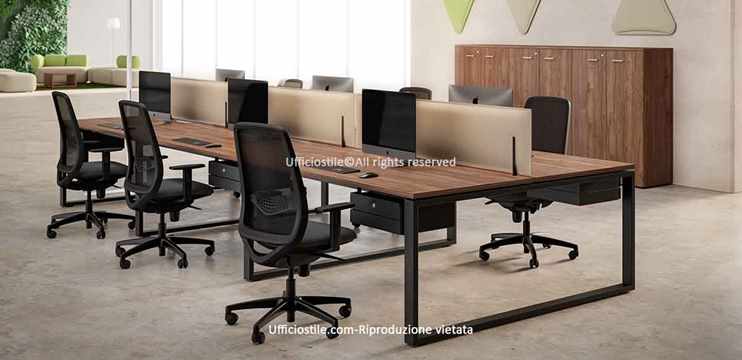
Bench 06 Workstations with Ring Structure
U4BA4816SC
€ 6.036€ 3.501 -
Vedi
Dettagli
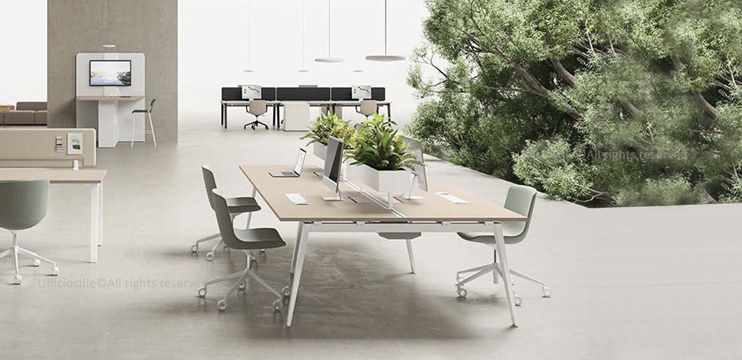
02 bench in line with flower boxes
ITMODVEP21
€ 3.562€ 2.280 -
Vedi
Dettagli
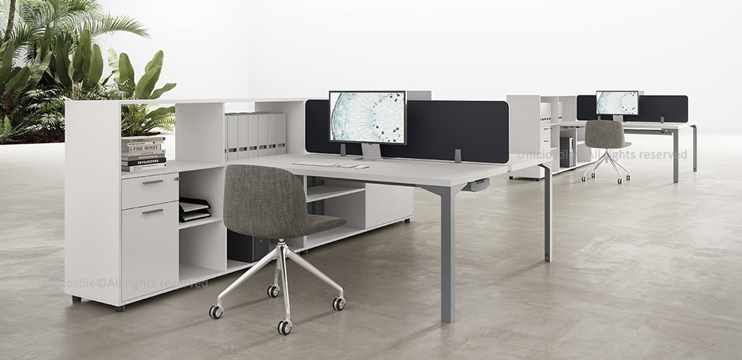
Bench table attached to furniture
ITMODVENA23
€ 2.927€ 1.903 -
Vedi
Dettagli
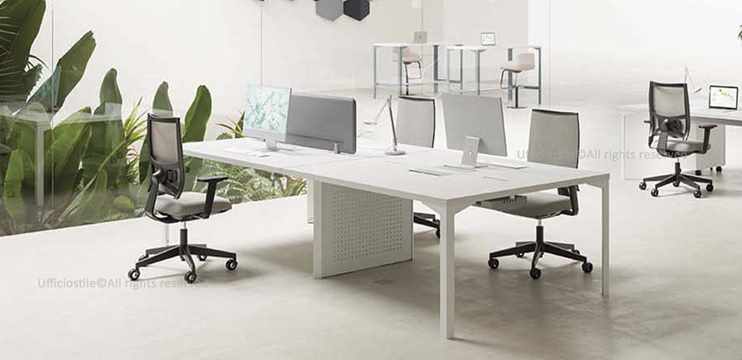
Bench 04 places with frontal panel
ITMODVENA21
€ 2.090€ 1.358 -
Vedi
Dettagli
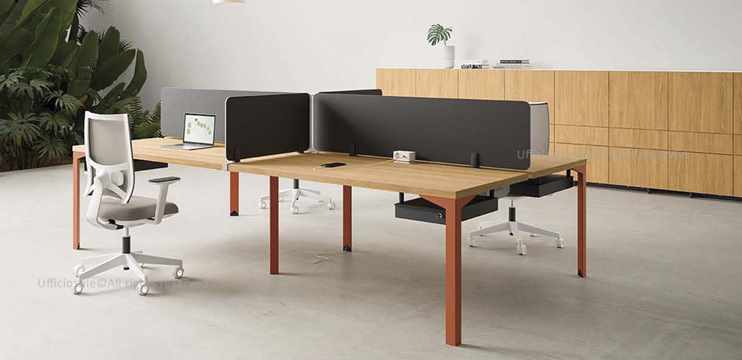
Bench 04 workstations
ITMODVENA20
€ 2.768€ 1.799 -
Vedi
Dettagli
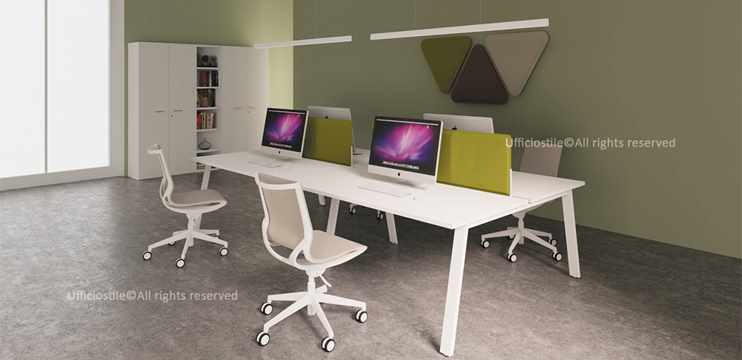
4-Seat Bench Workstation with Bookcases
ITMOU402
€ 3.165€ 1.836 -
Vedi
Dettagli
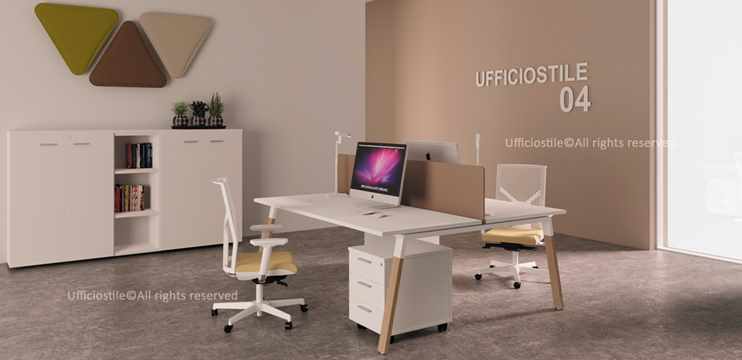
Bench 02 workstations, chests of drawers and bookcases
ITMOU401
€ 2.630€ 1.525 -
Vedi
Dettagli
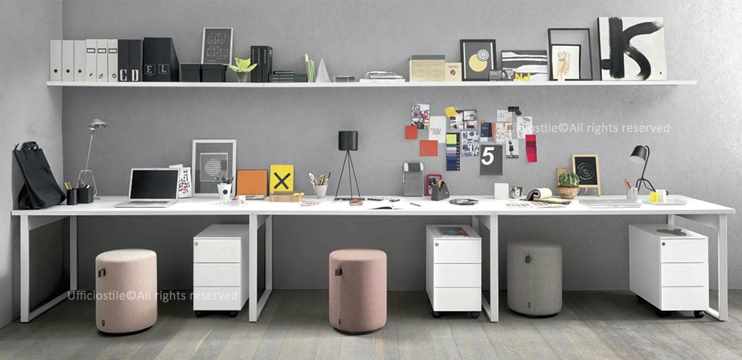
Desks connected in line and drawers
ITMOMAPI15
€ 2.533€ 1.672 -
Vedi
Dettagli
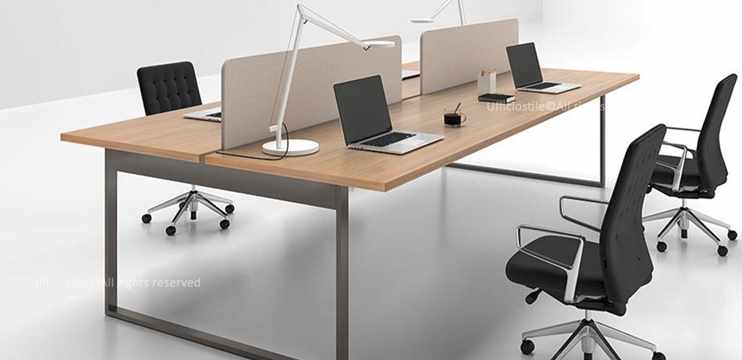
Bench 04 seats cm. 280
ITMOMAPI06
€ 1.867€ 1.400 -
Vedi
Dettagli
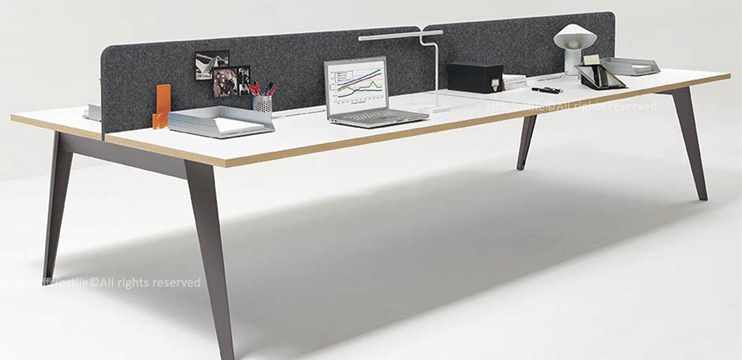
Bench 04 seats cm. 360
ITMOMAPI02
€ 2.393€ 1.795 -
Vedi
Dettagli
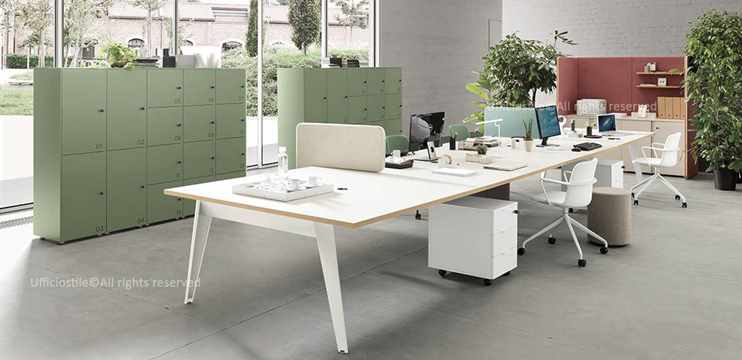
Desk table cm. 320
ITMOMAPI01
€ 1.955€ 1.329 -
Vedi
Dettagli
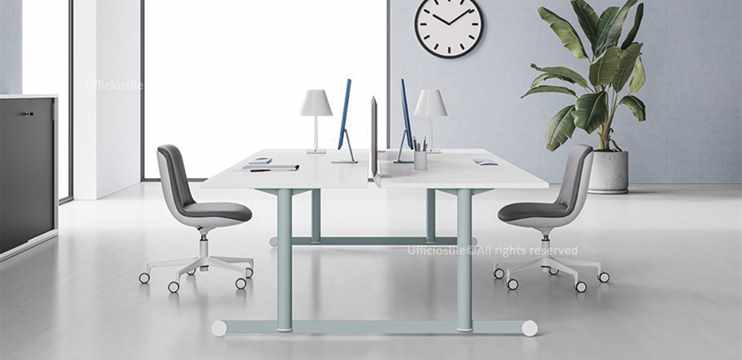
Bench 02 workstations
ITMODVOS09
€ 845€ 592 -
Vedi
Dettagli
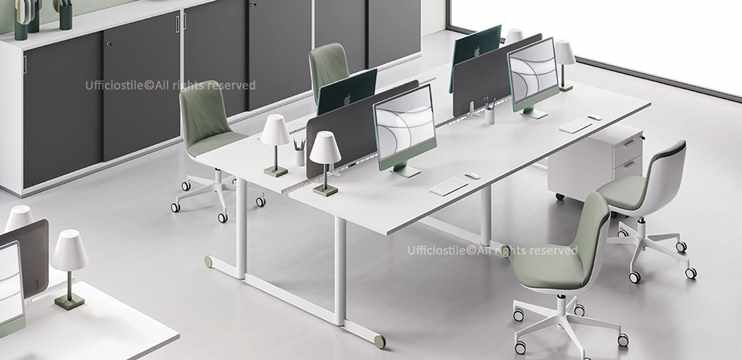
Bench 04 workstations
ITMODVOS03
€ 1.803€ 1.262 -
Vedi
Dettagli
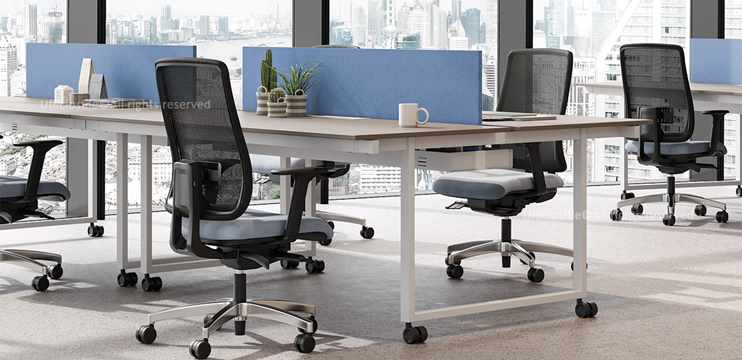
Nomadic Table on Wheels – 160 cm
ITMOFRBE20
€ 1.330€ 971
Bench desks are multi-user workstations characterized by a linear design, where the main desk structure is composed of a metal support system—less commonly melamine. These bench desks are widely used in modern offices, open spaces, and coworking areas, where the main goal is to maximize available space and encourage collaboration among employees.
Bench Description
Structure:
The design features a metal or wooden framework that connects the side legs and often includes one or more horizontal beams beneath the work surface. These beams act as reinforcements, enhancing the overall stability of the workstation.
Continuous Work Surface:
In multi-workstation bench desks, the worktop is typically created using modular components, allowing multiple workstations to be aligned in a single linear configuration. This continuous surface fosters communication and teamwork.
Modularity and Flexibility:
Benches are designed to be modular, enabling the number of workstations to be expanded or reduced as needed. Multiple bench modules can be placed side by side to create spacious and adaptable work environments.
Materials Used:
The structure is usually made from powder-coated steel to ensure strength and durability, while the work surface can be melamine, laminate, or wood, depending on aesthetic preferences and durability requirements.
Integrated Accessories:
Bench desks can be equipped with divider panels, cable management trays, electrical sockets, and storage modules. These additions improve functionality and help keep the workspace neat and organized.
Advantages of Bench Desks
✅ Space Maximization:
The structure allows for the creation of multiple workstations within a relatively compact area, making the most of the available space—ideal for open-plan offices and collaborative environments.
✅ Stability and Durability:
The reinforced design offers additional support to the worktop, ensuring stability even with large desk surfaces. This makes bench desks suitable for setups involving multiple monitors or heavier equipment.
✅ Easy Reconfiguration:
Thanks to their modular nature, benches can be easily reconfigured—adding, removing, or repositioning workstations to match the evolving needs of the office. This is especially valuable in dynamic coworking spaces.
✅ Enhanced Collaboration:
The open, linear design facilitates communication among employees and promotes a collaborative work environment. It's perfect for project teams and roles that require frequent interaction.
✅ Modern, Professional Aesthetic:
Clean lines and a minimalist structure give bench desks a sleek, contemporary look, well-suited to modern offices and coworking spaces.
Common Uses of Bridge-Style Bench Desks
🔹 Open-Plan Offices:
Bench desks are especially well-suited for open office layouts where collaboration and space optimization are key.
🔹 Coworking and Shared Workspaces:
Their modularity and configurability make them ideal for coworking settings where user needs may change frequently.
🔹 Team Workstations:
Perfect for project-based teams who require continuous interaction and quick access to colleagues.
🔹 Training and Workshop Areas:
Benches can also be used in training rooms or workshops to create flexible, multi-user configurations for participants.
Design Variants
🔸 Benches with Divider Panels:
To improve focus and privacy, divider panels can be installed between workstations, while still maintaining a collaborative setup.
🔸 Benches with Reinforced Beams:
For longer workstations, some models include additional beams for extra support, ensuring stability even under heavy loads.
🔸 Benches with Integrated Cable Management:
Some models feature cable routing systems built into the horizontal beams or legs to keep the workspace tidy and safe.
Conclusion
Bench desks are an ideal solution for modern, collaborative offices focused on optimizing space and fostering communication among team members. Their modular, sturdy, and flexible design allows for efficient workspace configuration. Perfect for open spaces, coworking environments, and project teams, bridge-style bench desks combine aesthetics and functionality to create a dynamic and productive working atmosphere.





















